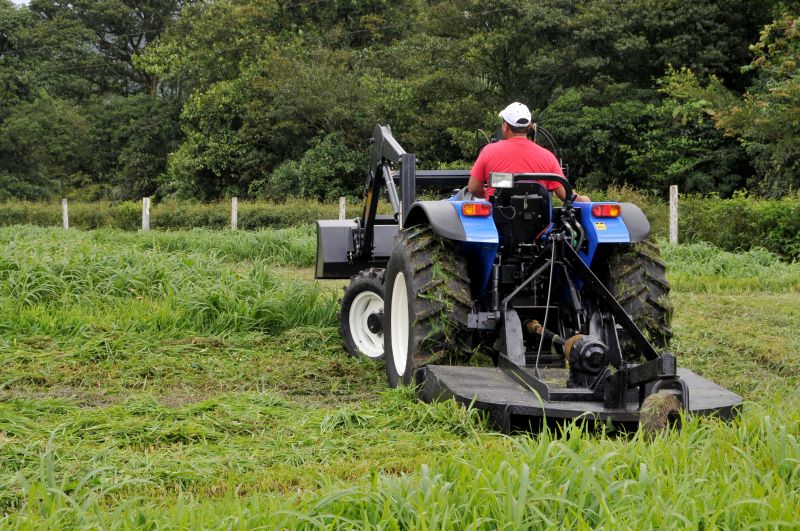Essential Products For Bush Hog Maintenance To Ensure Reliable Performance
Choose from a curated list of maintenance supplies that support consistent operation and reduce downtime.
 Maintaining a bush hog is essential for ensuring optimal performance and longevity of the equipment. Proper upkeep involves a variety of products designed to keep parts clean, sharp, and functioning smoothly. From blades and belts to lubricants and filters, selecting the right maintenance products can help prevent breakdowns and extend the lifespan of your machinery. It's important to understand the different types of products available and how they contribute to overall maintenance routines.
Maintaining a bush hog is essential for ensuring optimal performance and longevity of the equipment. Proper upkeep involves a variety of products designed to keep parts clean, sharp, and functioning smoothly. From blades and belts to lubricants and filters, selecting the right maintenance products can help prevent breakdowns and extend the lifespan of your machinery. It's important to understand the different types of products available and how they contribute to overall maintenance routines.
Types of Products For Bush Hog Maintenances
Replacement Blades
Essential for maintaining cutting efficiency and performance, replacement blades come in various sizes and designs to fit different models.
Drive Belts
Drive belts transfer power from the engine to the blades and other moving parts, requiring regular inspection and replacement when worn.
Hydraulic Filters
Hydraulic filters help keep hydraulic systems clean and free of debris, ensuring smooth operation of lifting and cutting mechanisms.
Lubricants and Greases
Lubricants reduce friction and wear on moving parts, while greases are used for joints and fittings to prevent rust and corrosion.
Engine Oil
Regular oil changes help keep the engine running smoothly and prevent overheating or damage.
Air Filters
Air filters prevent dust and debris from entering the engine, maintaining optimal airflow and performance.
Fuel Filters
Fuel filters keep contaminants out of the fuel system, ensuring consistent engine performance.
Cleaning Sprays and Degreasers
These products help remove dirt, grease, and debris from equipment surfaces, facilitating maintenance and inspection.
Rust Preventatives
Rust preventatives protect metal parts from corrosion, especially during storage periods.
Protective Coatings
Coatings help shield equipment from weather-related damage and prolong the lifespan of metal surfaces.
Popular Choices
A common choice for maintaining cutting efficiency, available in various sizes to fit different models.
Popular for keeping hydraulic systems clean and functioning smoothly.
Frequently replaced to ensure consistent power transfer and prevent downtime.
Regular oil changes are a common maintenance task to keep engines running well.
Vital for preventing debris from entering the engine, ensuring reliable operation.
Widely used for reducing friction and protecting moving parts.
Popular for maintaining equipment cleanliness and ease of inspection.
Commonly used to protect equipment during storage periods.
Help maintain consistent engine performance by filtering out contaminants.
Chosen for shielding equipment from weather-related wear and tear.
Routine maintenance tasks often include replacing worn blades, adjusting belts, and applying lubricants to moving parts. Using quality replacement blades ensures clean cuts and reduces strain on the motor, while proper lubrication minimizes wear and tear. Filters are also critical for keeping debris out of the engine and hydraulic systems, maintaining efficient operation. Additionally, cleaning supplies and protective coatings can help prevent rust and corrosion, especially if the equipment is stored outdoors.
Choosing the appropriate products depends on the specific model and usage frequency of your bush hog. Compatibility, durability, and ease of installation are key factors to consider. Regular inspections combined with the right maintenance products can help identify potential issues early and keep your equipment in good working order. Investing in reliable maintenance supplies can ultimately save time and money by reducing downtime and repair costs over time.
Key Buying Considerations
- Compatibility with your specific bush hog model to ensure proper fit and function.
- Material quality and durability to withstand tough conditions and frequent use.
- Ease of installation and replacement to minimize downtime and labor effort.
- Product reviews and ratings for insights into performance and reliability.
- Brand reputation and manufacturer support for quality assurance.
- Availability of replacement parts and accessories for future maintenance needs.
- Cost-effectiveness by balancing quality and affordability.
- Specific maintenance needs such as blade sharpening versus replacement.
- Frequency of maintenance tasks to determine the durability needed for products.
- Storage requirements and shelf life for maintenance supplies.
- Environmental conditions where the equipment is used, affecting product choice.
- Compatibility with other equipment components to avoid mismatched parts.
- Safety features and instructions provided with maintenance products.
- Warranty or satisfaction guarantees offered by suppliers.
- Availability of multi-pack or bulk options for cost savings.
